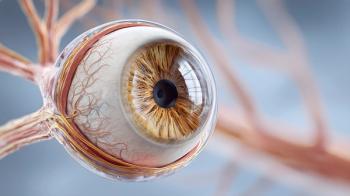
AI Model Able to Correctly Identify Retinopathy of Prematurity
The AI system correctly identified all of the severe cases and accurately detected 80% of the cases with more-than-mild retinopathy of prematurity in a real-world population.
Artificial intelligence was able to accurately detect severe cases of retinopathy of prematurity (ROP) in a real-world population of preterm infants, according to a new study
Retinopathy of prematurity is a leading cause of blindness in children. Children born before 30 weeks of pregnancy or who weigh less than 3 pounds are at the greatest risk. In these babies, the blood vessels of the retinal may stop developing normally, and abnormal blood vessels develop. Infants with retinopathy of prematurity may develop other conditions as they get older, including retinal detachment, nearsightedness, cross eyes and lazy eye, according to the
About 14,000 preterm infants in the United States develop retinopathy of prematurity, and between 1,100 and 1,500 develop severe disease.
Michael Chiang, M.D., and his colleagues developed the i-ROP Deep Learning system while he was with Oregon Health & Science University School of Medicine. The system, developed in collaboration with Massachusetts General Hospital, uses an AI algorithm to identify blood vessel anomalies in retinal images. Chiang is now director of the National Eye Institute of the National Institutes of Health.
Previously, Chiang and his colleagues had shown that their AI technology could accurately diagnosis retinopathy of prematurity in a controlled experiment. This new study demonstrates that the AI screening for ROP is effective in a real-world population. The technology was able to correctly identify the condition on its own without ophthalmologist support.
The AI model was trained using retinal images that were collected from January 2012 to July 2020 of infants who had been screened retinopathy of prematurity. The images were separated into two groups. One group of 16,334 images was used for training the AI model. The second group was a test dataset with 5,704 images.
The study then assessed infants who were screened for retinopathy of prematurity in the United States through the SUNDROP telemedicine program from February 2013 to July 2021, as well as the ROPE-SOS telemedicine program in India from March 2019 to December 2020. Images of the retinas were taken by nurses and had been reviewed by ophthalmologists. The physicians had found that about 1.2% of the babies had severe forms of ROP; about 5.8% had more-than-mild cases. The AI system correctly identified all of the severe cases and accurately detected 80% of the cases with more-than-mild ROP.
Although researchers are optimistic that AI could one day be used to diagnose infants with ROP, they point out the risk of potentially misdiagnosing those who does have the disease and potentially lead to vision loss.
This research was supported by the National Eye Institute of the National Institutes of Health, the Eunice Kennedy Shriver National Institute of Child Health & Human Development of the National Institutes of Health, Research to Prevent Blindness, Malcolm Marquis Innovation Fund, U.S. Agency for International Development, Seva Foundation and the National Eye Institute’s intramural research program.
Newsletter
Get the latest industry news, event updates, and more from Managed healthcare Executive.




















































